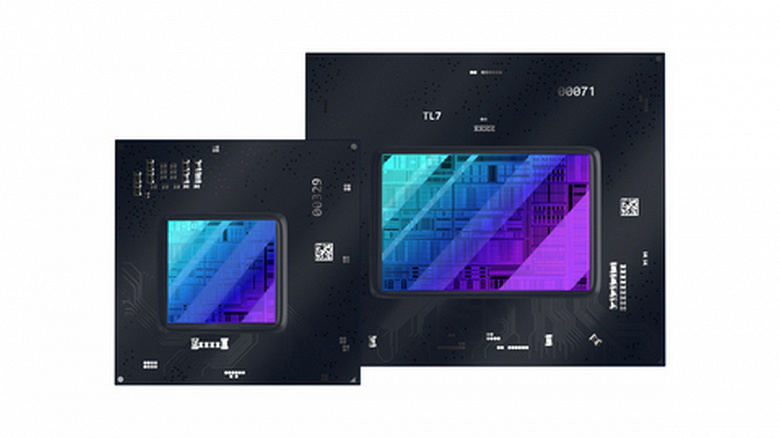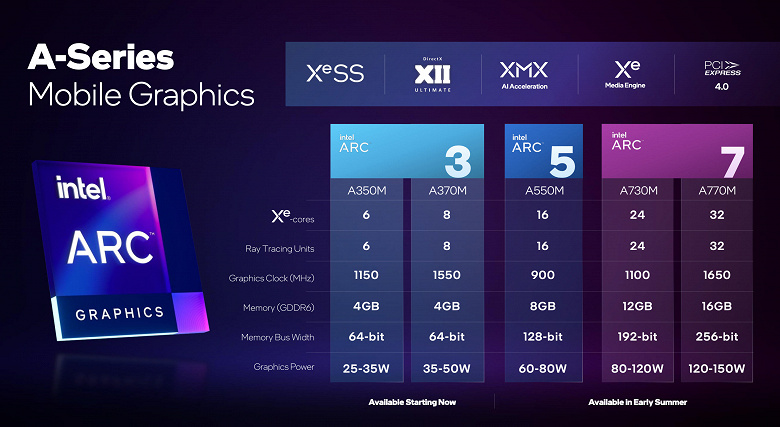Intel, as promised, today introduced its first Arc discrete graphics cards. So far only mobile. Solutions for the desktop segment and workstations Intel promises later this year. According to early data, at least the first ones will be presented before the end of the semester.

We have already seen a poster with the characteristics of five models, so we can not dwell on this in great detail. We can note the use of a bus with a bit width from 64 to 256 bits and a large spread in GPU frequencies. Also quite impressive is the 16 GB of memory in the mobile Arc A770M.

Notebooks with Arc 3 cards will be the first to enter the market. Such models are already available for pre-orders. Solutions with Arc 5 and Arc 7 will appear in early summer.
As you can see, Arc 3 cards, even according to Intel’s own measurements, cannot boast of performance. Even the older Arc A370M is noticeably faster than the iGPU in the Core i7-1280P, but in most games there is not even a twofold increase. And if we recall the capabilities of the built-in Radeon 680M core in the new Ryzen 6000, it’s not a fact that Intel’s new products will be faster.
But Arc graphics cards can offer new features. The first is the Intel Xe Matrix Extensions (XMX) AI features that accelerate AI-related computing. Secondly, it is the Intel XeSS supersampling technology. Thirdly, the hardware decoder AV1. Fourth, Intel Deep Link technology, which ensures more coordinated work of new video cards in conjunction with Intel processors.
Source: ixbt
Donald-43Westbrook, a distinguished contributor at worldstockmarket, is celebrated for his exceptional prowess in article writing. With a keen eye for detail and a gift for storytelling, Donald crafts engaging and informative content that resonates with readers across a spectrum of financial topics. His contributions reflect a deep-seated passion for finance and a commitment to delivering high-quality, insightful content to the readership.







